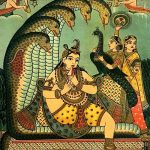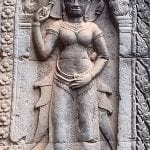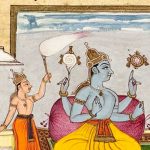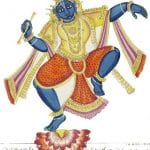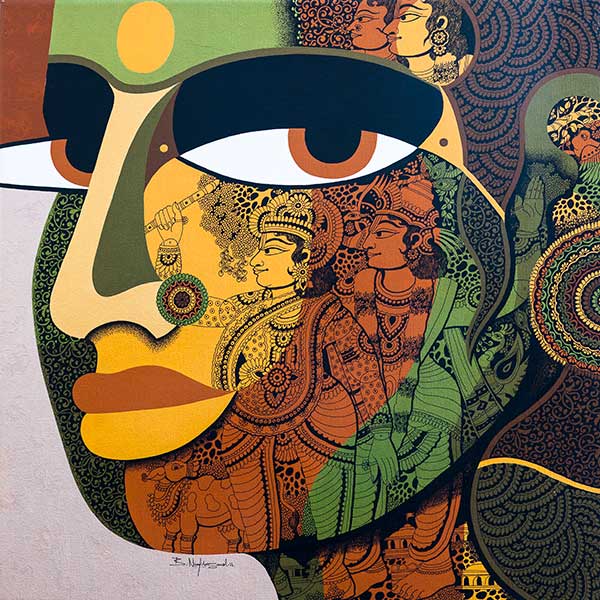Bhagavad Gita: Divinity and Humanity

Bhagavad Gita is one of the most valued and important religious texts in Hinduism. This course focusses on the nature of Divinity in Bhagavad Gita and the relationship between divinity and humanity.
This course enables students to explore the role of Krishna in the Bhagavad Gita and understand the core teachings of a key sacred text from Hinduism. Students are guided through different perspectives and interpretations from major teachers in order to experience a well-rounded understanding of Krishna in the Bhagavad Gita.
Students are provided with modern translations of the text and are able to research and compare different interpretations in order to fully grasp what Krishna is saying, all with help from commentaries from Sankara, Ramanuja, and Madhva.
The aim of this course is to deepen our students understanding of one of the most important texts within Hinduism. Not only do we discuss how this text has affected religious worship but how it has influenced Hindu culture and philosophical beliefs within Hinduism.
To enrol or to find more about this course, take a look at the course breakdown below. Alternatively, if you’re looking for a different course, take a look at our learning pathways.
GET 50 % OFF ALL SELF-TAUGHT COURSES FOR A LIMITED TIME ONLY
Start Date: Any time!
Self-Taught Course
Number of Sessions: Seven
113 pages
On-Demand Video
The main video component of your course. On-demand means you can watch at the time that suits you.
6hr 19min
Campus-Wide Zoom Sessions
You will also be invited to join five general-interest Zoom sessions. These are open to all enrolled students and cover a range of topics related to Indian thought and philosophy.
They are a great way to meet students and tutors from other courses!
Self-taught Course
£95 Original price was: £95.£47Current price is: £47.
Associated Courses
What we cover in this course
In this course, we learn what Krishna says in the Bhagavad Gita about the nature of God and the relationship between God and humanity.
We look at those passages of the Bhagavad Gita that speak of divine identity. This task is not always easy because different teachers offer different explanations. Therefore, we will also look at the commentaries of three major teachers: Sankaracarya, Madhvacarya, and Ramanujacarya.
In this course we focus on Chapters 7, 9, 12, and 15 of the Gita. We also refer to other chapters where appropriate.
Each week’s notes include:
- translations of the verses,
- explanation of significant Sanskrit words,
- extracts from the commentaries of Sankara, Ramanuja, and Madhva,
- an overview and analysis of the text.
Of course, there are no obviously right or wrong answers here. It is possible to properly understand the Bhagavad Gita from many perspectives. However, as we shall see, the text sometimes seems to point towards a particular perspective.
In this course we use Dr Sutton’s translation of Bhagavad Gita.
Click here to download a pdf copy.
Session One
In this session we introduce the Gita in its context within the Mahabharata. We look at what classical teachers have said about the Gita and explore the ideas of Sankaracarya, Madhvacarya, and Ramanujacarya.
Session Two
We begin our exploration of the Bhagavad Gita with Chapter 4 and the concept of avatar. We then look at Chapter 7 in some detail, as the text moves away from karma-yoga and meditation and towards the nature of God, the path of devotion, and God’s relationship with the world.
mattaḥ parataraṁ nānyat kiṁcid asti dhanaṁjaya
mayi sarvam idaṁ protaṁ sūtre maṇiganā iva
“There is no other thing that is superior to me. This whole world rests on me, just as jewels rest on their thread.” (Bhagavad Gita 7.7)
Session Three
We continue with Chapter 7. Krishna describes the world as consisting of unconscious matter and the conscious soul – the source of life. He declares both of these to be his energies and says that he is the fundamental principle that holds the world together and sustains it. Krishna declares that he is the ultimate reality and that nothing is superior to him. In the remainder of Chapter 7, Krishna talks about how to turn this theoretical understanding into practice.
Session four
In this session, we look briefly at Chapter 8. We then begin a study of the ninth chapter. Chapter 8 explores the state of consciousness at the time of death, and how this affects the passage of the soul into the next life. It is concerned with devotion to God, but also with Yoga, by which the mind can be controlled and properly directed as death approaches. In Chapter 9, Krishna returns to ideas introduced in the seventh chapter. He expands upon themes of knowledge of God and understanding practical religion and worship.
Session five
Ramanuja and Madhva teach that Chapter 9 is central to devotional Hinduism. Sankara, however, keeps an Advaitic perspective by identifying Krishna as the indwelling atman and interpreting devotion to Krishna as striving to realise the atman. While the Deity does identify with his creation, the text here does not lend itself to the Advaitic view. The phrase “they worship me” (bhajanti mām), and the processes given for worship indicate that the worshipped is distinct from the worshipper. This emphasis is a notable difference between the Bhagavad Gita and the Upanishads, where bhakti is virtually ignored.
This section helps us understand why the Gita is so important to Hindu belief. Much of contemporary Hinduism is shaped by devotional tendencies and it is in the Bhagavad Gita that this is given a philosophical basis. It is also in the Gita that devotion and worship are described as the highest expression of religious life.
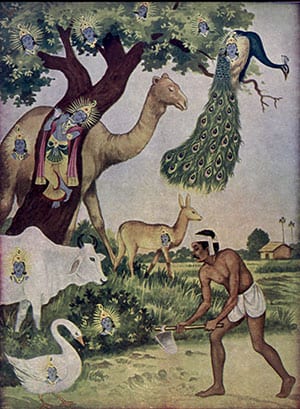
Session six
Chapter 10 recaps Chapter 9 and is an important summary of the key points. The text then moves quickly to the awesome viśva-rūpa (universal form) in Chapter 11. In earlier chapters, we have had hints of the viśva-rūpa in statements that describe all existence as a part of God. Now we are given an overt revelation of this.
First, Arjuna states that he accepts Krishna’s divinity. He then asks how his presence in this world can be understood. In the second half of Chapter 10, Krishna explains that he is present in this world as the most magnificent feature of each category of existence.
In Chapter 11, Arjuna asks Krishna if he can go beyond a theoretical understanding of God’s presence and actually see it with his own eyes. It is this request that leads to the tremendous revelation that forms the main part of this chapter.
Session seven
In this final session, we look at Chapter 12, the last of the middle six chapters. This chapter then concludes Krishna’s exposition on the nature of God and religious practice based upon this realisation. In Chapter 12, Arjuna asks Krishna about devotion in relation to the invisible akshara feature of the divine.
As well as Chapter 12, we look at the final six verses of Chapter 15, and then the conclusion of the Gita in Chapter 18.
Associated Courses
Course Creator

Dr Nick Sutton
Nick is the Director – and the heart and soul – of the OCHS Continuing Education Department. He is a dedicated teacher with decades of experience in making sometimes-confusing traditions relevant. He has created over a dozen online courses and is working on many more. He has written translations and commentary on Bhagavad Gītā and the Yoga Sūtra. Nick received his Phd from Lancaster University (1995). His thesis was on the religious teachings of the Mahabharata.

